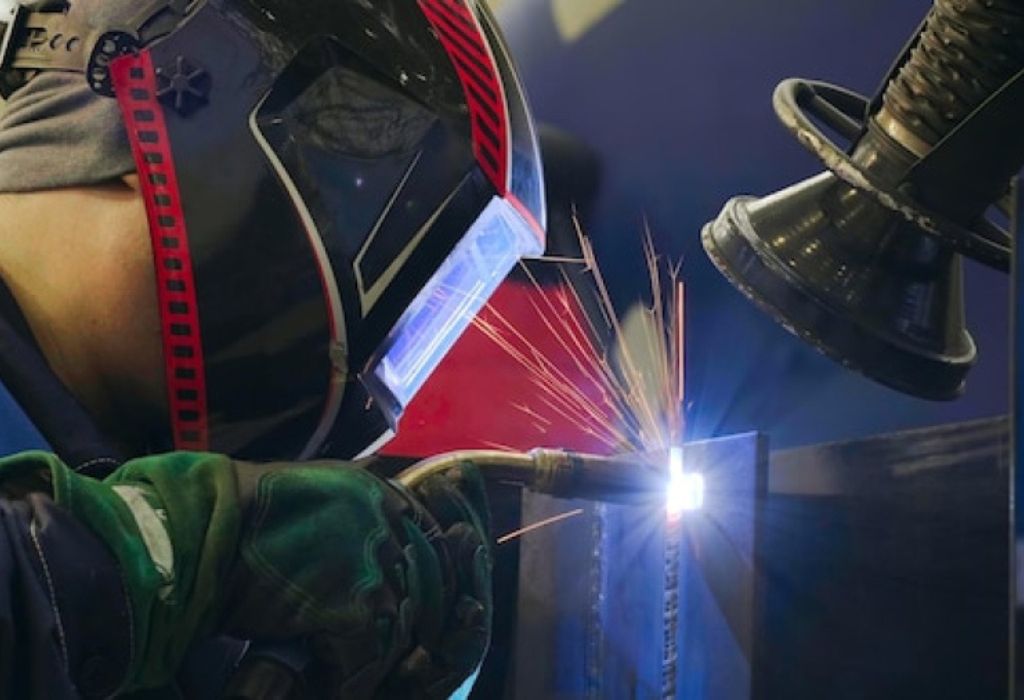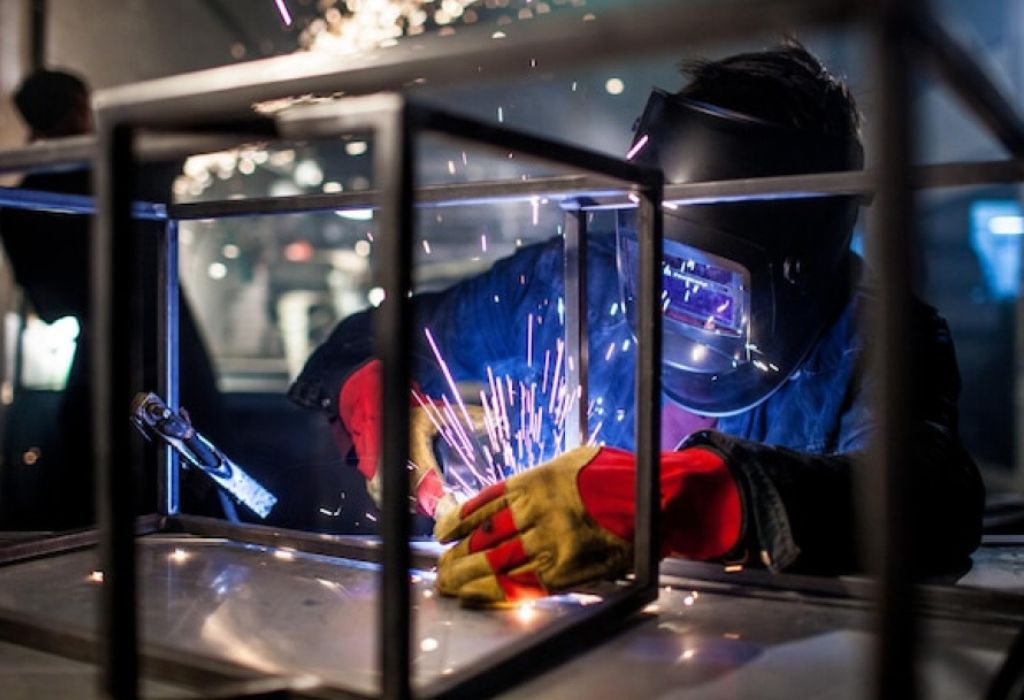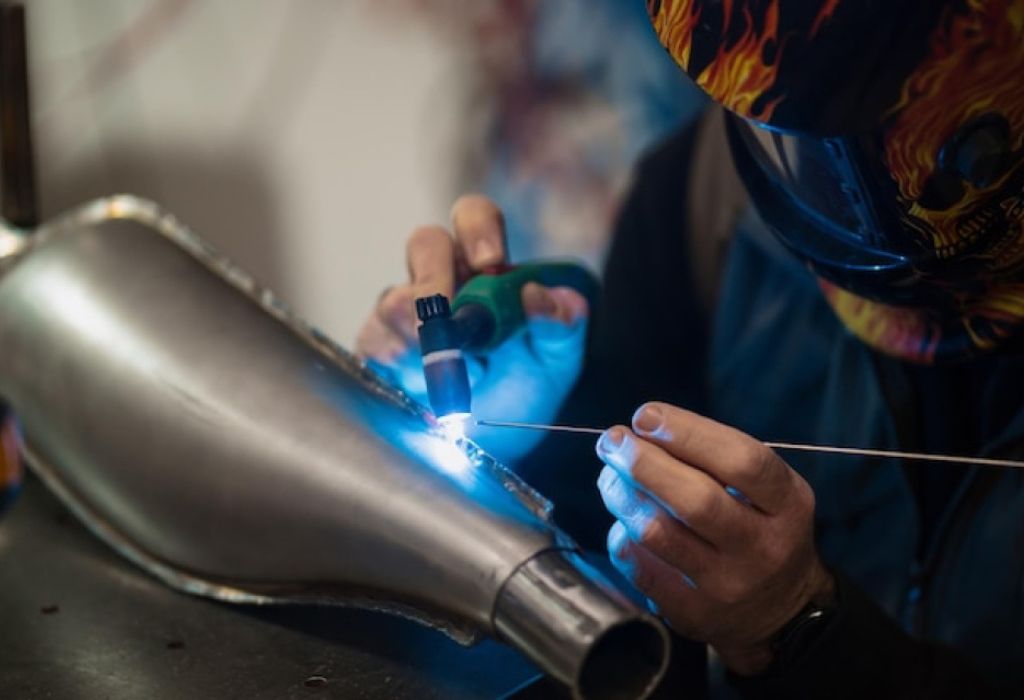Every welder has asked this question at least once — can you use argon for both MIG and TIG welding? The idea sounds convenient: one gas for two processes, saving cost and storage space. But the truth is more technical than it seems, and understanding how argon behaves in different welding setups can make or break your weld quality.
Both MIG (Metal Inert Gas) and TIG (Tungsten Inert Gas) welding depend on shielding gas to protect the molten metal from air contamination. Argon, being an inert gas, does not react with metals or the atmosphere, making it a popular choice among welders worldwide. In fact, studies show that over 70% of professional welders rely on argon-based mixtures for clean, stable arcs and precise weld control (TWI Global).
However, not all metals or welding methods respond the same way to pure argon. While TIG welding performs exceptionally well with 100% argon, MIG welding often requires gas blends like argon mixed with carbon dioxide (CO₂) or oxygen (O₂) for deeper penetration and better arc stability on steel. Using the wrong gas can lead to weak welds, poor fusion, and excessive spatter — issues that could compromise both safety and finish.
In this guide, you’ll learn exactly when argon works for MIG and TIG welding, what gas combinations professionals recommend, and how gas composition impacts arc quality, penetration, and appearance. Whether you’re welding aluminum, stainless steel, or mild steel, understanding argon’s role will help you achieve stronger, cleaner, and more reliable welds every time.
Understanding MIG and TIG Welding Processes

Before deciding if argon can be used for both MIG and TIG welding, it’s essential to understand how these two methods differ. While both rely on an electric arc to melt and fuse metal, the way they create and control that arc is completely different.
MIG welding (Gas Metal Arc Welding or GMAW) uses a continuously fed wire electrode that melts to form the weld bead. The process is semi-automatic, fast, and efficient, making it ideal for thicker materials and high-production environments. The shielding gas — often a mix of argon and carbon dioxide (CO₂) — protects the weld pool from oxidation and improves penetration.
TIG welding (Gas Tungsten Arc Welding or GTAW), on the other hand, uses a non-consumable tungsten electrode and requires the welder to manually feed a filler rod. It delivers precise, clean welds, perfect for thin materials, aluminum, and stainless steel. TIG welding almost always uses 100% argon because it provides a stable arc and prevents contamination.
Both techniques depend heavily on shielding gases to maintain weld quality, but their requirements differ. MIG welding benefits from active gases that enhance penetration and control spatter, while TIG demands pure inert shielding for high-precision work.
What is MIG welding and how is it typically performed?
MIG welding uses a spool-fed wire electrode and shielding gas to weld thick metals quickly with consistent results.
What is TIG welding and how does it differ from MIG?
TIG welding uses a tungsten electrode and manual filler rod control, providing precise, cleaner welds for thin or delicate materials.
What role does shielding gas play in MIG and TIG welding?
Shielding gas protects the molten weld pool from air exposure, preventing oxidation and porosity.
What materials and thicknesses are each process best suited for?
MIG works best for thicker materials like mild steel, while TIG is ideal for thin metals, aluminum, and stainless steel.
Why is the choice of gas especially important for these welding methods?
Because gas composition directly affects arc stability, penetration, bead appearance, and overall weld strength.
What Is Argon’s Role in Shielding Gas for Welding?
Argon is a noble gas and completely inert, meaning it doesn’t react with other elements during welding. Its stability makes it one of the most widely used shielding gases in both MIG and TIG welding. The main purpose of argon is to protect the molten weld pool from contaminants like oxygen, nitrogen, and water vapor that can cause porosity or brittleness.
Argon also helps stabilize the welding arc, ensuring a smooth, consistent flow of current between the electrode and the metal surface. This leads to clean weld beads, minimal spatter, and better control of the weld puddle.
In MIG welding, argon can be used on non-ferrous metals such as aluminum, magnesium, and copper alloys. For ferrous metals like carbon steel, argon is typically blended with CO₂ or O₂ to improve penetration and reduce undercutting. TIG welding, however, uses pure argon almost universally.
What are the properties of argon that make it useful for welding?
It’s inert, heavy, and non-reactive, which shields the weld from oxidation and stabilizes the arc.
In which welding methods is 100% argon commonly used?
Pure argon is used in TIG welding and MIG welding of aluminum or copper alloys.
How does argon shielding help weld quality and arc stability?
It produces a clean, stable arc and prevents atmospheric gases from contaminating the molten pool.
Are there limitations or drawbacks to using argon in all welding applications?
Yes. In MIG welding on steel, pure argon causes shallow penetration and weak fusion.
What alternatives or blends exist alongside argon for welding processes?
Common mixes include argon with 5–25% CO₂ for MIG, and argon-helium blends for TIG welding of thick materials.
Can You Use Argon for MIG Welding?
You can use argon for MIG welding — but only under certain conditions. For non-ferrous metals like aluminum, magnesium, or copper, pure argon works perfectly. It creates smooth welds and stable arcs. However, for mild steel or stainless steel, 100% argon is not ideal because it leads to poor penetration, excessive spatter, and weak joints.
MIG welding of steel requires active gases to improve fusion and heat transfer. That’s why most professionals use blends such as 75% argon / 25% CO₂ (C25) or 90% argon / 10% CO₂. These combinations enhance arc stability, increase penetration, and reduce defects.
Pure argon in MIG steel welding produces narrow beads with limited depth. It can also cause arc wandering and incomplete fusion, which weakens structural integrity. For this reason, argon is best reserved for specific metals and processes rather than universal use in MIG.
Is pure argon a suitable shielding gas for MIG welding steel?
No, it lacks the reactivity needed for proper penetration in steel welding.
When might pure argon be acceptable for MIG welding?
When welding aluminum, magnesium, or copper alloys that require a smooth arc and clean finish.
What are the risks of using 100% argon in a MIG weld on steel?
You may experience poor penetration, weak welds, and irregular bead shape.
What gas mixes are recommended instead of pure argon for MIG on steel?
Use blends like 75% argon / 25% CO₂ or 90% argon / 10% CO₂ for stronger, cleaner results.
Can a welder switch between argon and a mix without major equipment changes?
Yes, but settings must be adjusted for flow rate and voltage to suit the gas used.
Can You Use Argon for TIG Welding?

TIG welding relies almost exclusively on pure argon as its shielding gas. The inert nature of argon prevents contamination of the tungsten electrode and molten puddle, creating strong, clean, and visually appealing welds. It works equally well on aluminum, stainless steel, and mild steel.
Argon’s heavier-than-air density ensures complete coverage of the weld zone. It also promotes easy arc starting and stable current flow. For thicker materials, some welders use argon-helium blends to boost heat and penetration, especially on aluminum or copper.
Unlike MIG, TIG welding does not benefit from active gases. Even a small addition of CO₂ can cause oxidation, tungsten contamination, or arc instability. This is why 100% argon remains the universal standard for TIG across all metal types.
Is pure argon the standard shielding gas for TIG welding?
Yes, it’s the most effective gas for achieving clean and stable TIG welds.
What advantages does argon provide for TIG welding of steel, stainless, and aluminum?
It ensures smooth arcs, low spatter, and excellent control of bead appearance.
When are argon/helium blends used instead of pure argon in TIG?
When welding thick or conductive materials that need extra heat input.
What would happen if a different gas mix (e.g., CO₂) were used for TIG welding?
The tungsten would oxidize, and the weld would become porous and brittle.
Does the use of argon affect weld aesthetics and quality in TIG welding?
Yes. Argon produces bright, uniform, and high-quality welds with minimal cleanup.
Comparing Argon Use Across MIG and TIG – What Works and What Doesn’t
Argon performs differently in MIG and TIG welding due to variations in electrical polarity and metal transfer modes. TIG welding thrives on pure argon because it needs arc stability and cleanliness rather than deep penetration. MIG welding, however, often requires a reactive element to achieve proper fusion.
For example, TIG with 100% argon produces flawless welds on thin aluminum, while MIG on the same metal yields good results. But MIG steel welding with pure argon leads to weak, shallow welds. The addition of CO₂ or O₂ in MIG gases enhances penetration and mechanical strength.
Why does argon perform differently in MIG vs TIG welding?
Because TIG uses a stable, non-consumable tungsten electrode, while MIG relies on a consumable wire needing reactive gas for fusion.
In what scenarios is argon the best choice for both MIG and TIG?
When welding non-ferrous metals such as aluminum, copper, or magnesium.
When should argon not be used in MIG welding and why?
Avoid pure argon for carbon or stainless steel because it limits fusion and penetration.
Can a multi-process welder switch between MIG and TIG with the same gas (argon)?
Yes, but results will only be optimal for aluminum or non-ferrous metals.
How do material, thickness, and filler wire impact the decision to use argon?
Thicker steel requires gas blends, while thin aluminum performs best with pure argon.
Practical Tips for Using Argon in Both MIG and TIG Welding Setups
If you plan to use argon for both MIG and TIG, follow proper setup guidelines. Always verify the flow rate, regulator compatibility, and gas purity. For TIG, the typical argon flow rate ranges from 15–25 cubic feet per hour (cfh), while MIG may require 35–50 cfh for adequate shielding.
Ensure your gas cylinder is properly labeled to prevent mix-ups. Use clean, dry hoses and check for leaks regularly. When switching between processes, adjust your welding parameters accordingly — voltage, wire feed speed, and torch distance vary significantly between MIG and TIG.
What gas flow rate is typically used for TIG welding with argon?
15–25 cfh provides stable coverage and a smooth arc.
What flow rate or settings change when trying argon for MIG welding?
35–50 cfh helps compensate for the wider weld area and faster wire feed.
What equipment or settings must be checked when using argon for both processes?
Ensure the regulator, torch, and hose connections are rated for argon use.
How do you monitor weld quality and detect issues when using argon?
Look for consistent bead shape, no discoloration, and minimal porosity.
What safety or maintenance considerations apply when switching gas or welding mode?
Purge lines, inspect seals, and never mix gases in the same cylinder.
Common Misconceptions and Mistakes When Using Argon for MIG and TIG

A common myth is that argon works perfectly for every type of welding. While it’s true that argon is versatile, it’s not universal. Using it incorrectly can lead to poor weld strength, high spatter, and shallow penetration — especially in MIG steel welding.
Some welders also believe that higher gas flow equals better protection. In reality, excessive flow causes turbulence, drawing in air and leading to contamination. Another misconception is that all shielding gases produce similar results. In practice, the right gas choice can determine whether your weld passes inspection or fails under stress.
Is it true that argon works equally well for MIG and TIG on all materials?
No, MIG welding steel with pure argon leads to weak welds and poor penetration.
Does using 100% argon guarantee the best weld in MIG steel applications?
No, CO₂ or O₂ blends are needed for better arc stability and deeper fusion.
What common mistakes do welders make when choosing argon as a universal gas?
Using it for all materials without adjusting parameters or understanding limitations.
Why is blindly following “argon for all welding” risky?
Because gas chemistry directly impacts weld strength, arc behavior, and durability.
How do industry standards or manufacturer guidance contradict popular myths?
Standards recommend specific gas blends for each metal and process, not one-size-fits-all solutions.
Conclusion
So, can you use argon for MIG and TIG welding together? The answer depends on what you’re welding. Pure argon works perfectly for TIG welding and for MIG welding non-ferrous metals, but it’s not suitable for MIG steel applications where penetration and fusion are critical.
Choosing the right shielding gas ensures stronger welds, cleaner beads, and longer-lasting results. Always consider the metal type, process, and gas blend before welding. A little planning will save you time, gas, and frustration — and help you achieve professional-quality results every time you strike an arc.

I’m Darrell Julian, the founder, lead writer, and hands-on welding enthusiast behind ArcWeldingPro.com. With more than 15 years of real-world welding experience, I created this platform to share what I’ve learned in the field, in the shop, and in the heat of the arc.


